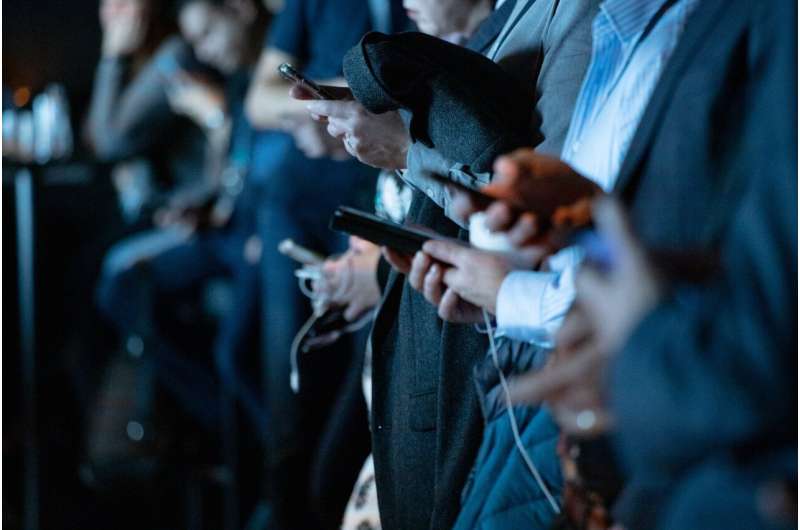Using your phone's microphone to track possible COVID-19 exposure

Signals sent and received from cell phone microphones and speakers could help warn people when they have been near someone who has contracted COVID-19, researchers say.
In a new paper, researchers described a system that would generate random, anonymous IDs for each phone, automatically send ultrasonic signals between microphones and speakers of phones within a certain radius, and use the information exchanged through this acoustic channel for contact tracing.
If a person tested positive for COVID-19, he or she would update his or her anonymous IDs and the timestamp when the IDs were generated in the past two weeks to a central database managed by a trusted health care authority. Each individual in the system will pull the positive patient's IDs and compare locally to check whether he or she has had any contact with the patient.
"We want to generate some kind of sound that cannot be heard by humans, but that phones can hear," said Dong Xuan, the leading faculty member of this research and a professor of computer science and engineering at The Ohio State University.
"The phone will periodically generate some kind of sound token and send that token to nearby phones—and the key advantage over other technologies is that the ultrasound could have limited range and will not penetrate obstacles such as walls."
The paper, which has not been peer-reviewed, was posted on the arXiv pre-print server.
Tech companies have already proposed using a phone's Bluetooth capability—which allows cell phones to "talk" to other nearby devices such as phones, smart watches and speakers—to build such a network. But Bluetooth, said Zhiqiang Lin, a co-author of the paper and an associate professor of computer science and engineering, could lead to a high number of false-positive close contacts.
"Bluetooth has a problem of traveling too far," Lin said. "Bluetooth signals can travel through walls and reach further than we would want. And with COVID, we want to find just those people with whom you have been in direct close contact—within that 6-foot radius, for example."
Contact tracing—identifying people who might have been exposed to a person who has tested positive for the virus—has been a key part of the public health strategy to stop the spread of illnesses for decades. In the case of COVID-19, though, contact tracing has been difficult. People might remember who they met for dinner before symptoms appeared, but they likely would not know how to contact the strangers who were near them in the grocery store.
"It's hard for people to remember who they had contact with, and augmenting manual contact tracing with automated techniques could greatly increase its reliability," said Ness Shroff, Ohio Eminent Scholar in networking and communications, who is leading an effort to develop an automated system for contact tracing and symptom reporting for the return to full operations at Ohio State.
Cell phone tracing could solve that problem, Shroff said—as long as it is accurate and provides a satisfactory level of privacy, and as long as people use it.
In Singapore, for example, authorities rolled out a contact tracing smartphone app in early March. Authorities estimated that about 60 percent of people needed to use the app for it to be effective; only about one in six people in Singapore downloaded the app.
The Singapore app, too, picked up contact between people who were in the same vicinity, but separated by walls or windows.
Shroff said the acoustic sensors might offer more control in the effort to trace the virus.
"In addition to exploring Bluetooth, we want to leverage other sensors in the phone to do contact tracing," Xuan said. "The key advantage of this work is that it lets a phone search for complementary sensors and uses the sensors to detect proximity. That is something that can complement the Bluetooth technology."
More information: Luo et al., ACOUSTIC-TURF: Acoustic-based Privacy-Preserving COVID-19 Contact Tracing. arXiv:2006.13362 [cs.CR]. arxiv.org/abs/2006.13362




















